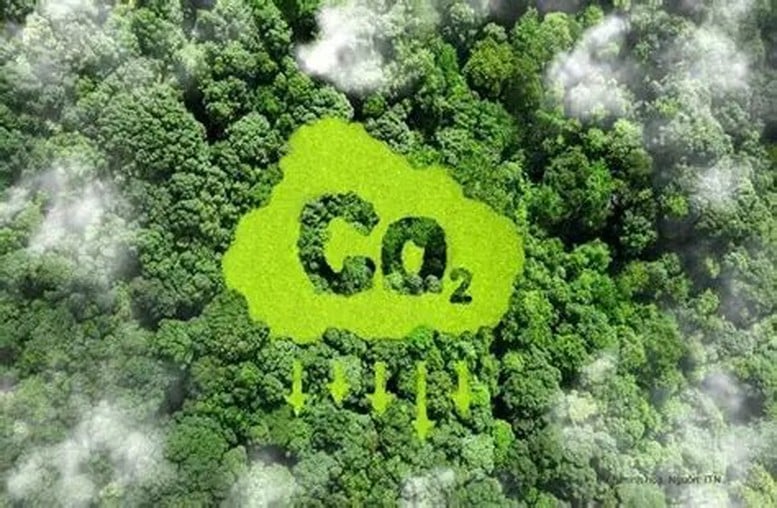
Carbon credit markets encourage businesses to invest in clean technology, while creating new financial flows for emissions reduction activities.
Carbon credits - a market mechanism for emission reduction
For Vietnam, the formation of a carbon credit market is not only a requirement from international commitments, but also an opportunity to create resources for economic development, especially in the forestry sector - an industry that is emitting negative emissions and owns large forest resources. However, to turn potential into real benefits, experts emphasize the need to synchronize legal corridors, financial mechanisms and business capacity.
According to Associate Professor Dr. Hoang Van Phu, Chairman of the Scientific Council of the Institute of Economics and Development, "the carbon credit market is the economic tool that determines the ability to promote greenhouse gas emission reduction and climate change response in the green growth model".
The essence of this market is the trading of CO₂ emission rights according to the “polluter pays” principle. This mechanism helps allocate resources efficiently, encourages businesses to invest in clean technology, and creates new financial flows for emission reduction activities.
Around the world , many countries have operated carbon markets and achieved remarkable results in the transition to a low-carbon economy.
In Vietnam, the fundamental legal system has been established, including: The Law on Environmental Protection 2020 recognizes the domestic carbon market for the first time; Decree 06/2022/ND-CP stipulates the roadmap and mechanism for operating the carbon market; Decision 232/QD-TTg (2025) approves the Carbon Market Development Project for the period 2025-2030.
The formation of a carbon credit trading floor expected in 2028 opens an important component of Vietnam's green finance market.
According to Dr. Tran Cong Thang, Director of the Institute of Strategy and Policy on Agriculture and Environment, Vietnamese enterprises are facing the requirement to adapt to global green standards. He emphasized: "Green transformation is a mandatory requirement, not a choice."
Major markets are increasingly tightening regulations on traceability, growing area codes, emission standards and social responsibility. Violations can result in businesses being eliminated from the supply chain.
Global environmental policies are changing rapidly, forcing businesses to invest in waste treatment technology, energy saving, and fuel conversion. "If the conversion is slow, businesses will lose the opportunity to compete," Dr. Thang warned.
The abuse of chemicals and resources not only harms the environment but also damages the reputation of products. Models such as the 1 million hectare high-quality, low-emission rice project are examples that green transformation can bring economic benefits if properly organized.
However, the biggest barriers remain the cost of technology investment, lack of green financial mechanisms and a fear of change.
With 14.79 million hectares of forest and a coverage rate of 42.02%, Vietnam is among the 10 countries with the fastest growing forest area in the world. This is an important foundation for developing forest carbon credits.
According to Mr. Tran Quang Bao, Director of the Department of Forestry (Ministry of Agriculture and Environment), "forestry is a negative emission sector, with great potential to participate in the carbon credit market".
Clear benefits for forest keepers are recognized, when forest carbon credits are traded, forest owners have additional legal income from forest protection work; People raise awareness of the economic value of forests; Forming a professional forest production and management mindset.
Mr. Bao said that Vietnam's receipt of 51.5 million USD from the Emission Reduction Payment Agreement (ERPA) for the North Central region funded by the World Bank is clear evidence. The World Bank highly appreciates Vietnam's carbon credit transfer and wishes to replicate this model worldwide.
In order for the carbon credit market to operate transparently and effectively, Mr. Tran Quang Bao recommended that it is necessary to complete the legal framework along with improving the capacity of localities and forest owners. Strengthen training and coaching on: measurement - reporting - verification (MRV), carbon credit calculation methods, and emission reduction project management.
Developing a synchronous data system is also considered a solution to measure and calculate credits early. Vietnam needs to soon build a forest carbon database, a measurement - reporting - appraisal system that meets international standards, and connect data between ministries and branches.
Technical and financial resources from international organizations will help Vietnam accelerate in the initial stages of carbon market operation.
Many experts have proposed a carbon credit sandbox – a controlled testing mechanism – to allow new models to operate safely before being widely applied. At the same time, the State should: encourage green finance, connect businesses with international markets, and promote banks to develop carbon credit packages.
Vietnam is at a pivotal stage. The initial results of the ERPA project with the World Bank show great potential and high feasibility. When the carbon credit trading floor comes into operation, the market will be more transparent, credit prices will be formed according to supply and demand and businesses can actively participate.
The carbon credit market is not only a tool to reduce emissions, but also a driving force for sustainable forestry development, increasing people's income and making a practical contribution to the Net-zero target by 2050.
Do Huong
Source: https://baochinhphu.vn/thi-truong-tin-chi-carbon-tai-san-xanh-mo-duong-cho-kinh-te-ben-vung-102251119160525012.htm



![[Photo] The Standing Committee of the Organizing Subcommittee serving the 14th National Party Congress meets on information and propaganda work for the Congress.](https://vphoto.vietnam.vn/thumb/1200x675/vietnam/resource/IMAGE/2025/11/19/1763531906775_tieu-ban-phuc-vu-dh-19-11-9302-614-jpg.webp)








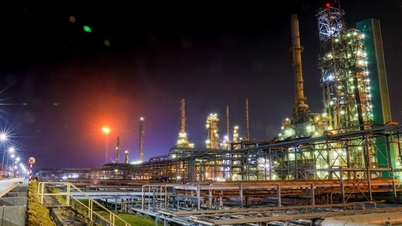
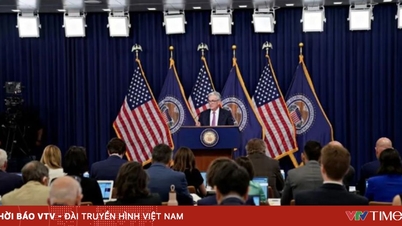

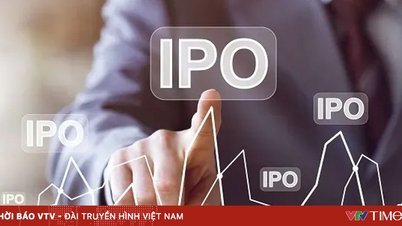





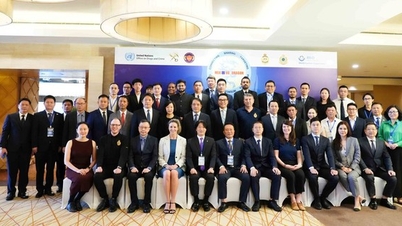
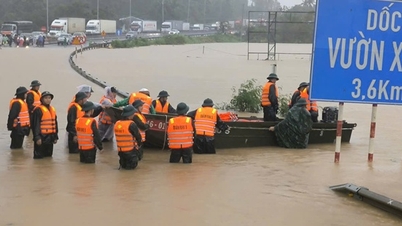
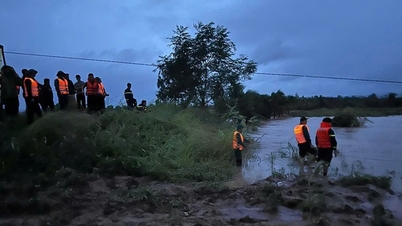


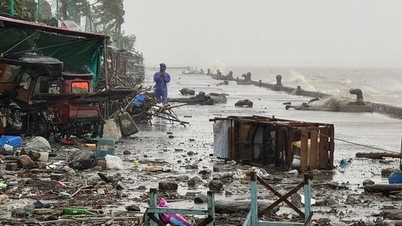
![[Photo] Prime Minister Pham Minh Chinh and his wife meet the Vietnamese community in Algeria](https://vphoto.vietnam.vn/thumb/1200x675/vietnam/resource/IMAGE/2025/11/19/1763510299099_1763510015166-jpg.webp)
![[Photo] General Secretary To Lam receives Slovakian Deputy Prime Minister and Minister of Defense Robert Kalinak](https://vphoto.vietnam.vn/thumb/1200x675/vietnam/resource/IMAGE/2025/11/18/1763467091441_a1-bnd-8261-6981-jpg.webp)












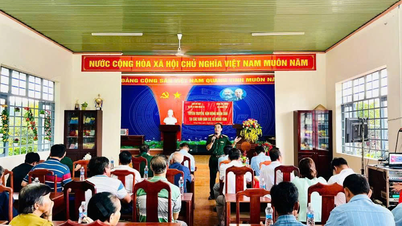















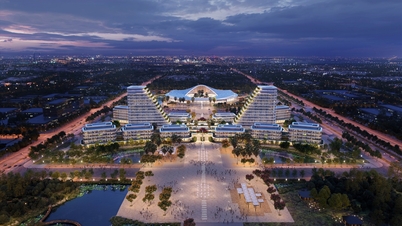













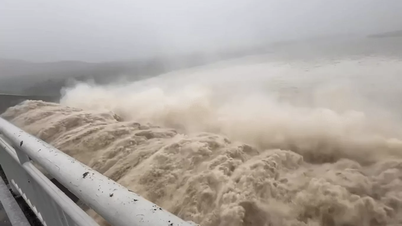












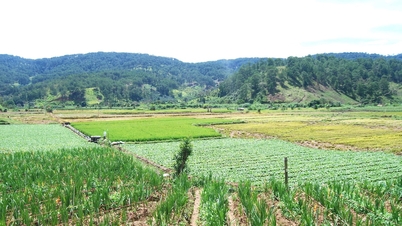





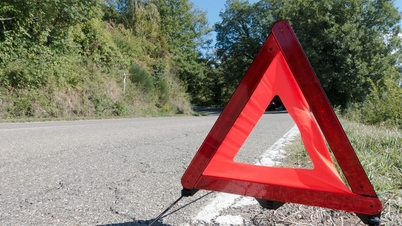

















Comment (0)